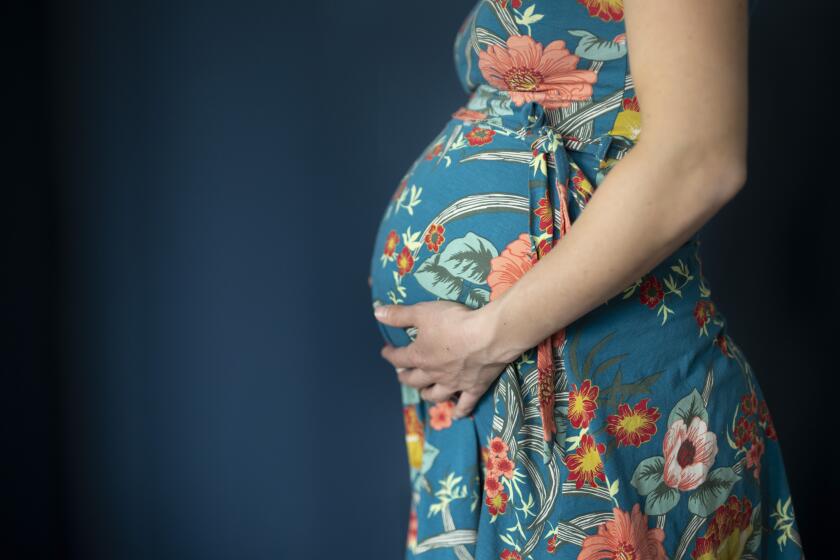Anatomy Lessons : A HISTORY OF THE BREAST.<i> By Marilyn Yalom</i> .<i> Alfred A. Knopf: 317 pp., $29.95</i>
Breasts are big news. According to the New York Times, breast cancer has become the No. 1 philanthropic cause. To some observers, breast cancer has received more attention than it merits, since it cuts down “only” 44,300 Americans a year, as opposed to the 158,000 who succumb annually to other cancers and the 500,000 who die of heart disease.
On the other hand, it’s a “resonant” disease, as one journalist recently put it, that has uniquely to do with intimacy and femininity. Thus, Marilyn Yalom’s “A History of the Breast” comes at an opportune time. She does not flinch at the challenge of discussing the breast as a seductive carrier of death. Hers is a steady, realistic gaze. It is only when she tries to understand what breasts have meant as “a sign” through art and history--in other words, how others have looked at them--that she falters, irritates and sometimes misses the point.
Her most interesting chapter is the medical one. Yalom takes us on a tour of practices and prejudices ranging as far back as ancient Egypt and Greece, where wasp dung and burnt bats were spread on breasts to heal them. The practice of applying goat dung to cancerous breasts was used by medieval practitioners. Only with Vesalius’ anatomical work in the early 16th century did many superstitions stand exposed.
Surgery then came into its own, at first barbarously as “surgeon barbers” were called upon to perform “the dirty work” for physicians. Finally, cellular pathology, developed gradually over two centuries, came to replace the age-old Galenic theory of the humors, thus allowing modern techniques such as radiation therapy to come into play. Preventive means now include regular mammograms and diet.
Into this tale of misery and carnage, relieved by few miracles, most probably natural ones, are introduced several brave women. Foremost--at least from a literary standpoint--is novelist Fanny Burney, who kept a minute diary of her hopes and sufferings while undergoing an atrocious mastectomy in 1811, a glass of wine for anesthesia, a handkerchief over her eyes, as she held up her own breast for the incision. The operation on Abigail Adams Smith, the president’s daughter, was not so successful. Also noted are some of the relatively few women in a position to contribute to the healing side--for example, Louise Bourgeois, a surgeon’s wife, who, in the 17th century, was the first midwife to write a book on obstetrics in France.
Less stirring than these medical stories is Yalom’s necessarily skimpy and possibly misleading account of perceptions of the breast in the ancient world and up to the 18th century.
Fertility goddesses and other mother images are only vaguely alluded to. Nothing new is added to our knowledge of Amazons. She mentions breast fetishes--a fascinating subject--but then doesn’t tell us what they were. It is startling to learn that the Virgin Mary is shown baring her breasts in a Last Judgment scene on a church wall in England and that there is an image of a beatified Mediterranean saint nursing a lamb in memory of Christ. Reproductions of these, if available and of good quality, would have made illuminating additions to the many fine pictures accompanying her text.
The question that preoccupies Yalom, a researcher at Stanford and a noted feminist, is a complaint as much as a query: “Who owns the breast?” Openly scorning “the male point of view” for more than 2,000 years, she searches for how women felt about their breasts to scavenge hints of “their efforts to reclaim ownership,” most notably now in the late 20th century. Since the testimony of women on this issue is rare, she is often forced to surmise.
Did women alone keep alive the pre-classical fertility myths, in subterranean fashion? Let classicists judge this dubious speculation. Yet surely it was a Herculean task to unravel these myriad intertwinings of myths and customs.
For the Hebrews, breasts were only “milk-producing vessels necessary for survival.” For Christians, a “metaphor for spiritual nurturance.” In this survey of attitudes, Yalom leans heavily on Freud’s opposition between “the good breast” and “the bad,” the life-giver and the life-destroyer, adding that now the breast is newly “bad” in its association with a deadly disease. She spends quite a bit of time debunking yet again Freud’s theory of penis envy, in her chapter on “The Psychological Breast,” while proposing her own whimsical hypothesis of breast envy.
Yalom is most convincing on the iconography of the breast when she moves into terrain eminently familiar to her as chronicler of women’s responses to a specific event in world history, drawing on her well-received 1993 study “Blood Sisters: The French Revolution in Women’s Memory.”
After shrewdly chronicling the public campaign against wet-nursing in favor of maternal breast-feeding in 18th century England, she moves on to France, pointing out how, after 1789, “a woman’s obligation to breast-feed merged with the collective responsibility of the nation to ‘nurse’ its citizens.” The employment of breasts in the service of democratic national imagery continues, she claims, right up through World War II and in the United States, most of it sexist despite the appearance of permissiveness.
For anyone coming to the subject for the first time or having to deal with the shattering experiences of breast disease, therapy and operation, Yalom’s encyclopedic rush-through will prove valuable and possibly comforting. If it’s true that one out of eight women in America will have to deal with this diagnosis, her book will prove enlightening. For those eager to dip into such specialized subjects as the history of brassieres and the ins and outs of corsets, she also provides useful summaries. But it’s quite an achievement to have written 30 pages on the dirty linen of our cultural history--the undergarment industry--without once cracking a smile.
As for breasts, aside from their reproductive role, they remain a wonder to behold--in art as in life.



